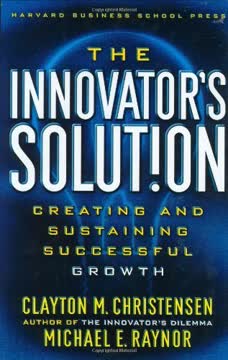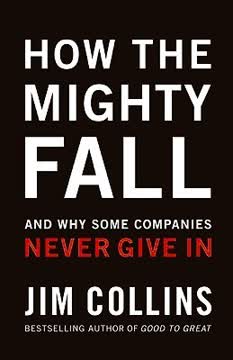つの重要なポイント
1. 小さなコミュニケーションの変化が説得力を劇的に高める
「メッセージに小さくて簡単な変更を加えるだけで、説得力が大幅に向上する。」
微妙な調整が重要です。 要求のフレームや情報の提示方法を少し変えるだけで、その説得力が大きく向上します。例えば:
- 要求をする際に「なぜなら」という言葉を使うと、たとえその理由が明白であっても、従う率が上がる
- 手書きのメモを付け加えるなど、メッセージを個別化することで、反応率が向上する
- 顧客の注文をそのまま繰り返すことで、ウェイターのチップが増える
言葉の選び方が重要です。 使用する具体的な言葉やフレーズが、説得の成否を左右します:
- 選択肢を利益ではなく損失としてフレームすることで、行動を促す効果が高まる
- 韻を踏むことで、発言がより正確で真実味があるように感じられる
- 希少性や独占性を強調することで、価値や欲求が高まる
2. 社会的証明は人間の行動に強力な影響を与える
「人々が行動の選択に迷ったとき、彼らは自分自身の外に目を向け、周囲の他の人々を参考にする傾向がある。」
私たちは群衆に従います。 人間は特に曖昧な状況で、他人の行動を手がかりにする自然な傾向があります。この社会的証明の原則は、倫理的に利用することで、ポジティブな行動を促進できます:
- 多くの人が望ましい行動を取っていることを強調することで(例:ホテルのタオルを再利用する)、従う率が上がる
- 類似した個人や仲間の証言を示すことで、マーケティングメッセージの効果が高まる
- 製品やサービスの人気や高い需要を示すことで、売上が増加する
ネガティブな社会的証明に注意。 時には、広範な望ましくない行動を強調することで、それを正当化してしまうことがあります。代わりに:
- ポジティブなトレンドや最も成功している個人の行動に焦点を当てる
- 行動が時間とともに変化していることを示す「動的規範」を使用する
3. 希少性と損失回避が意思決定を促す
「人々は可能な利益よりも可能な損失に対して敏感である。」
逃すことへの恐怖が動機付けになります。 希少性の原則は、人々が希少なものや入手困難なものをより価値あるものと見なすことを示唆しています。これはさまざまな文脈で応用できます:
- 期間限定のオファーや独占的な取引が売上を促進する
- 製品のユニークな特徴や利点を強調することで、その価値が高まる
- 決定を利益ではなく損失としてフレームすることで、より強い影響を与える
損失回避は強力です。 人々は一般的に、同等の利益を得るよりも損失を避けることに動機付けられます。この心理的傾向を倫理的に利用することができます:
- 行動しないことによる潜在的な損失を強調する
- コスト削減策を「節約したお金」ではなく「失われたお金」としてフレームする
- 行動を取らないことで逃すかもしれないユニークな機会を強調する
4. 互恵性が義務感を生み、従う意欲を高める
「互恵の規範は、他人から受けたものに対して返礼する義務を私たちに課す。」
与えることで受け取る。 互恵性の原則は、人々が恩恵や贈り物、善意のジェスチャーに対して返礼する義務を感じることを示唆しています。これは関係を築き、行動に影響を与える強力なツールです:
- 無料サンプルや価値ある情報を提供することで、売上や顧客ロイヤルティが向上する
- 予期しない個別の善意のジェスチャーを提供することで、ビジネス関係が強化される
- 小さな恩恵や譲歩が、より大きなコミットメントを引き出すことができる
タイミングと個別化が重要です。 互恵性の効果は以下によって高まります:
- 期待せずに最初に与える
- ジェスチャーを予期しないものとし、真摯に感じさせる
- 贈り物や恩恵を受け手の興味やニーズに合わせる
5. 以前のコミットメントとの一貫性が将来の行動を形作る
「人々は既存の態度、発言、価値観、行動と一貫性を保つ自然な傾向がある。」
過去の行動を活用する。 一度コミットメントをすると、人々は一貫性を保つために関連する行動を取りやすくなります。この原則はさまざまな方法で応用できます:
- 大きなコミットメントの前に小さなコミットメントを求める(フット・イン・ザ・ドア技法)
- 要求をする際に過去の行動や発言を思い出させる
- 公的または書面によるコミットメントを促して、実行率を高める
小さく始めて積み上げる。 一貫性の力は徐々に活用できます:
- 簡単で同意しやすい発言や行動から始める
- 時間をかけてコミットメントのレベルを徐々に高める
- 過去の従順を基盤にして、将来の要求を行う
6. 個別化と類似性が説得効果を高める
「私たちは、価値観、信念、年齢、性別など、個人的な特徴を共有する他人の行動に従いやすい。」
類は友を呼ぶ。 人々は自分と似ていると感じる人々に影響されやすいです。この原則はさまざまな説得の文脈で応用できます:
- メッセージを共有する特徴や経験を強調するようにカスタマイズする
- ターゲットオーディエンスに似た個人の証言やケーススタディを使用する
- 共通の目標、価値観、課題を強調する
個別化が影響力を高める。 コミュニケーションやオファーを個々の好みやニーズに合わせることで、その効果が高まります:
- 適切な場合には人々の名前や個人的な詳細を参照する
- オーディエンスをセグメント化し、特定のグループにメッセージをカスタマイズする
- 過去の行動や述べた好みに基づいて個別の推奨を提供する
7. タイミングと文脈が説得の結果に大きく影響する
「最初に経験することが、次に経験することの認識を決定する。」
タイミングが重要です。 説得の試みの効果は、いつどのように行われるかによって大きく異なります:
- 受け手の感情状態や疲労度を考慮する
- より好ましくない選択肢を最初に提示することで、対比効果を利用する
- 自然な意思決定ポイントや移行期を活用する
文脈が認識を形作る。 説得の試みを取り巻く環境や状況が、その成功に大きく影響します:
- 物理的な手がかり(例:背景画像)を使用して、望ましい連想を促す
- 相互作用の広範な文脈(例:文化的規範、現在の出来事)を考慮する
- 関連する参照点やアンカーに関連付けて要求をフレームする
8. 倫理的な影響力が長期的な信頼と関係を築く
「これらのツールが不誠実に、または人工的に社会的影響の原則を自然に存在しない状況に持ち込むなど、武器として不道徳に使用される場合、短期的な利益はほぼ確実に長期的な損失に続く。」
正直さが報われる。 不道徳な説得戦術は短期的な利益をもたらすかもしれませんが、最終的には関係や評判を損ないます。倫理的な影響力は以下に焦点を当てます:
- 正確な情報と真の価値を提供する
- 影響を受ける人の自律性と幸福を尊重する
- 長期的な信頼と相互利益の関係を築く
透明性が信頼を築く。 説得の試みについてオープンであることが、逆説的にそれをより効果的にすることがあります:
- 潜在的なバイアスや利益相反を認める
- 潜在的な欠点を含むバランスの取れた情報を提供する
- 過度な圧力をかけずに、人々が情報に基づいた決定を下せるようにする
9. 文化の違いがグローバルな文脈での説得戦略に影響を与える
「社会的影響の基本原則と本書で議論する多くの戦略はすべての文化で強力な説得力を持ちますが、最近の研究は、説得しようとしている人の文化的背景に合わせて戦術やメッセージを微調整する必要があることを示唆しています。」
一律では通用しない。 ある文化的文脈でうまくいく説得戦略が、別の文脈では効果が薄いか、逆効果になることもあります。考慮すべき主要な文化的次元には以下が含まれます:
- 個人主義対集団主義
- 権力距離
- 不確実性回避
- 長期志向対短期志向
アプローチを適応させる。 文化を超えて効果的であるためには:
- 地元の習慣、価値観、コミュニケーションスタイルを調査し、尊重する
- 文化的要因がメッセージの解釈にどのように影響するかを考慮する
- 文化的文脈に基づいて説得戦術を調整する準備をする
人間の行動は複雑でありながら予測可能なパターンに従います。説得の原則を理解し、倫理的に適用することで、他者に影響を与え、ポジティブな結果を生み出す能力が大幅に向上します。真の関係を築き、価値を提供し、文化の違いを尊重することに焦点を当てることで、ますます相互に結びついた世界で効果的なコミュニケーターやリーダーになることができます。
最終更新日:
FAQ
What's "Yes!: 50 Secrets from the Science of Persuasion" about?
- Overview: "Yes!: 50 Secrets from the Science of Persuasion" by Noah J. Goldstein, Steve J. Martin, and Robert B. Cialdini explores scientifically-backed strategies to enhance persuasion skills.
- Content Structure: The book is divided into 50 chapters, each revealing a unique persuasion technique supported by research and real-world examples.
- Purpose: It aims to provide readers with practical tools to influence others ethically and effectively in various contexts, from business to personal interactions.
- Authors' Expertise: The authors are renowned experts in psychology and marketing, bringing credibility and depth to the insights shared.
Why should I read "Yes!: 50 Secrets from the Science of Persuasion"?
- Practical Application: The book offers actionable strategies that can be applied in everyday situations to improve communication and influence.
- Scientific Foundation: Each technique is grounded in rigorous psychological research, ensuring reliability and effectiveness.
- Broad Relevance: Whether you're a business professional, educator, or simply looking to improve personal relationships, the book provides valuable insights.
- Ethical Persuasion: It emphasizes ethical influence, helping readers achieve positive outcomes without manipulation.
What are the key takeaways of "Yes!: 50 Secrets from the Science of Persuasion"?
- Small Changes, Big Impact: Minor adjustments in communication can significantly enhance persuasiveness.
- Social Proof: People are influenced by the actions of others, making social proof a powerful tool in persuasion.
- Reciprocity Principle: Offering something first can create a sense of obligation in others to reciprocate.
- Consistency and Commitment: People prefer to act consistently with their commitments and values, which can be leveraged to gain compliance.
How does "Yes!: 50 Secrets from the Science of Persuasion" define the principle of social proof?
- Definition: Social proof is the psychological phenomenon where people mimic the actions of others in an attempt to reflect correct behavior.
- Application: The book illustrates how highlighting the popularity of a behavior or product can increase its adoption.
- Research Example: Studies show that informing hotel guests that most others reuse towels significantly increases towel reuse rates.
- Practical Tip: Use testimonials and case studies to demonstrate widespread approval and encourage similar behavior.
What is the "foot-in-the-door" technique discussed in "Yes!: 50 Secrets from the Science of Persuasion"?
- Technique Explanation: The "foot-in-the-door" technique involves making a small request first to increase the likelihood of agreement to a larger request later.
- Psychological Basis: Agreeing to a small request creates a sense of commitment, making individuals more likely to comply with subsequent larger requests.
- Research Insight: The book cites studies where initial small commitments led to significantly higher compliance with larger requests.
- Practical Use: This technique can be applied in sales, negotiations, and even personal requests to gradually build agreement.
How does "Yes!: 50 Secrets from the Science of Persuasion" suggest using scarcity to influence others?
- Scarcity Principle: People value things more when they perceive them as scarce or limited in availability.
- Psychological Impact: Scarcity creates a sense of urgency and exclusivity, prompting quicker decision-making.
- Real-World Example: The book discusses how limited-time offers and exclusive deals can drive consumer behavior.
- Ethical Consideration: While effective, the book advises using scarcity ethically to avoid manipulation and maintain trust.
What are some of the best quotes from "Yes!: 50 Secrets from the Science of Persuasion" and what do they mean?
- "Small changes can make a big difference." This highlights the book's core message that minor adjustments in approach can significantly enhance persuasion.
- "People follow the lead of similar others." Emphasizes the power of social proof and the influence of peer behavior on decision-making.
- "Reciprocity is the social glue that binds us." Underlines the importance of giving first to create a sense of obligation and cooperation.
- "Consistency is the hobgoblin of little minds." Suggests that while consistency is powerful, it should not lead to inflexibility or closed-mindedness.
How does "Yes!: 50 Secrets from the Science of Persuasion" address the use of authority in persuasion?
- Authority Principle: People tend to follow the lead of credible, knowledgeable experts.
- Application: The book advises leveraging authority by highlighting credentials and expertise to enhance persuasiveness.
- Research Support: Studies show that perceived authority can significantly increase compliance and trust.
- Practical Tip: Use endorsements, certifications, and expert opinions to establish authority and influence decisions.
What is the "labeling technique" in "Yes!: 50 Secrets from the Science of Persuasion"?
- Technique Overview: The labeling technique involves assigning a positive label to someone to encourage behavior consistent with that label.
- Psychological Mechanism: People strive to act in ways that align with how they are labeled, reinforcing the desired behavior.
- Research Example: The book cites studies where labeling individuals as "above-average citizens" increased their likelihood of voting.
- Practical Application: Use positive labels in feedback and encouragement to motivate desired actions in others.
How does "Yes!: 50 Secrets from the Science of Persuasion" suggest handling objections in persuasion?
- Acknowledge and Reframe: The book advises acknowledging objections and reframing them to highlight positive aspects.
- Two-Sided Messages: Presenting both pros and cons can increase credibility and trustworthiness.
- Research Insight: Studies show that addressing weaknesses upfront can make strengths more persuasive.
- Practical Use: Use this approach in negotiations and presentations to build trust and address concerns effectively.
What role does emotion play in persuasion according to "Yes!: 50 Secrets from the Science of Persuasion"?
- Emotional Influence: Emotions can significantly impact decision-making and receptiveness to persuasion.
- Research Findings: The book discusses studies showing how emotional states can alter perceptions and responses.
- Practical Tip: Tailor messages to resonate emotionally with the audience for greater impact.
- Caution: Be mindful of the ethical implications of using emotions in persuasion to avoid manipulation.
How can "Yes!: 50 Secrets from the Science of Persuasion" help improve negotiation skills?
- Preparation and Strategy: The book provides strategies for setting the stage for successful negotiations, such as building rapport and using social proof.
- Consistency and Commitment: Leveraging past commitments can strengthen negotiation positions and encourage agreement.
- Authority and Expertise: Highlighting expertise can enhance credibility and influence in negotiations.
- Practical Examples: The book offers real-world scenarios and research-backed techniques to apply in various negotiation contexts.
レビュー
本書『Yes!: 50 Scientifically Proven Ways to Be Persuasive』は賛否両論の評価を受けた。多くの読者はその情報量と実用性を評価し、簡潔な形式と現実世界での応用を称賛した。説得技術の科学的根拠を評価する声もあった。しかし、批評家たちは深みと独創性に欠けると感じ、特にチャルディーニの以前の作品と比較してその点を指摘した。文章のスタイルが退屈で繰り返しが多いと感じる人もいた。全体として、読者は人間行動と説得戦術に関する洞察を評価したが、単独のリソースとしての効果については意見が分かれた。
Similar Books











